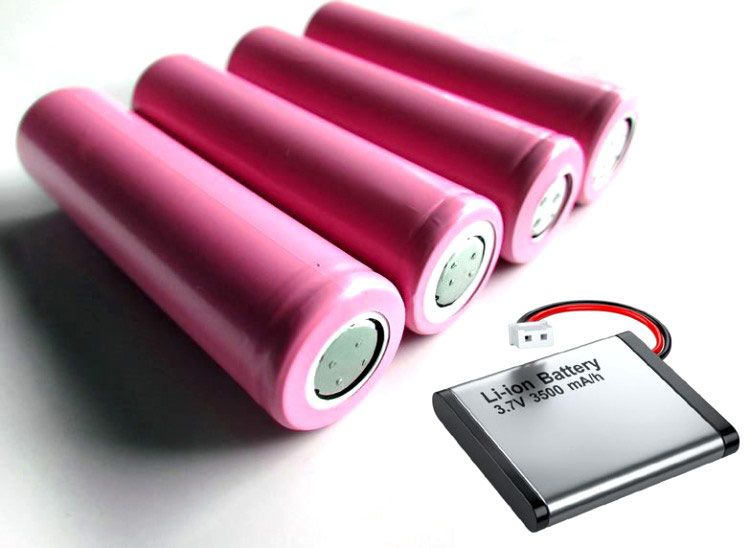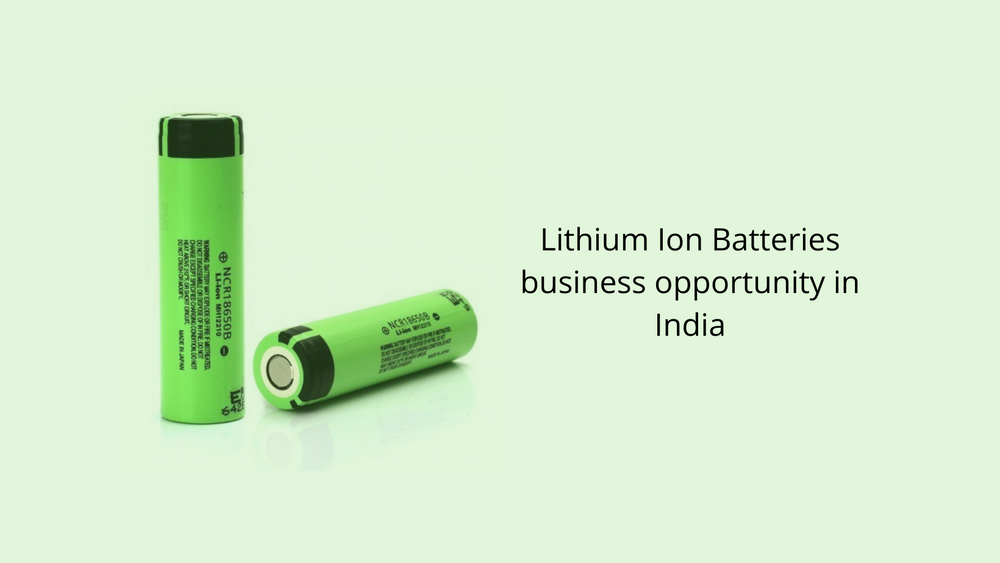Lithium Ion Batteries business opportunity in India
Hello People. This article is about Lithium Ion Batteries business opportunity in India. Lithium-Ion Batteries are getting popular not just in electric vehicles but also in various applications like power tools and consumer electronics.
Lithium Ion Batteries comprise almost 40% of the cost of an electric vehicle. This cost is very crucial to understand as this cost structure can single-handedly decide the future of electric vehicles and thus, the possibility of a greener Earth.
Talking about the costs involved within the battery. 65% of a battery cost is cell manufacturing. 35% is assembly. In the cost structure of cell, 35% is the cathode, 15% anode, 25% is the cell assembly, and 25% is the others like electrolyte and separators. The negative (anode) is cast mainly on the copper foil, whereas the positive (cathode) is cast on aluminum foil. A thin electron-insulating layer (named separator) soaked with the electrolyte (liquid ion-conducting media) separates the two electrodes.

The Li-ion battery business opportunity can be though of as four segments namely extraction and production of raw materials, cell component (electrodes) manufacturing, cell assembly and recycling.
Are you looking to start your business in the electric vehicle industry? We provide software development, web application development, mobile application development, charging stations management app, electric vehicle fleet management software development, cyber security and all software services. Please check our home page here https://iwheels.co/

Ok. Let's get back to the article.
Talking about first segment "extraction and production of raw materials", Cobalt and lithium are the two key raw materials used to manufacture cathode sheets and electrolytes, the subcomponents of lithium-ion (Li-ion) battery cells from 2014 through 2016. Both cobalt and lithium are highly concentrated in a few countries. More than 80% of global lithium production comes from Australia, Chile, and Argentina, while more than 60% of manganese is mined in South Africa, China, and Australia.
Cobalt supply chain is relatively less secure than the lithium supply chain. Cobalt is mainly produced as a byproduct or coproduct of copper and nickel, both of which have volatile markets. As for the lithium market, although Australia owns about 47% of global lithium reserves and accounts for an average of 41% of global lithium production, China accounts for 47% of lithium carbonate refinery capacity, mostly because it processes the vast majority of Australian lithium.
Talking about the second segment "cell component (electrodes) manufacturing", wet processing of electrodes has matured such that it is a commonly employed industrial technique.
The electrode manufacturing procedure is as follows: battery constituents, which include (but are not necessarily limited to) the active material, conductive additive, and binder, are homogenized in a solvent. These components contribute to the capacity and energy, electronic conductivity, and mechanical integrity of the electrode. The resulting suspension is referred to as the electrode slurry, which is then coated onto a metal foil, i.e. Al and Cu foils for positive electrodes and negative electrodes, respectively
Coming to the third segment "cell assembly", one can start assembly of electric vehicle lithium ion batteries" in a small amount (around 20 to 25 Lac Rs). Being one of the world's largest automotive markets, China and India are home to the world's leading battery manufacturers as well as new entrants in the market. Global automakers, such as Suzuki Motor Corporation (SMC) and DENSO Corporation, are investing heavily in the developing markets for lithium-ion battery packs. The global lithium-ion battery pack market will only widen with the wave of planned new manufacturing facilities in China and India.
Talking about the fouth segment "recycling", Recyclers primarily target metals in the cathode, such as cobalt and nickel, that fetch high prices. (Lithium and graphite are too cheap for recycling to be economical.) But because of the small quantities, the metals are hard to find and recover.
Recyclers use two techniques, known as pyrometallurgy and hydrometallurgy. The more common is pyrometallurgy, in which recyclers first mechanically shred the cell and then burn it, leaving a charred mass of plastic, metals, and glues. At that point, they can use several methods to extract the metals, including further burning. Hydrometallurgy, in contrast, involves dunking battery materials in pools of acid, producing a metal-laden soup. Sometimes the two methods are combined. Both methods have advantages and downsides.
Pyrometallurgy, for example, doesn't require the recycler to know the battery's design or composition, or even whether it is completely discharged, in order to move ahead safely. But it is energy intensive.
Hydrometallurgy can extract materials not easily obtained through burning, but it can involve chemicals that pose health risks. And recovering the desired elements from the chemical soup can be difficult, although researchers are experimenting with compounds that promise to dissolve certain battery metals but leave others in a solid form, making them easier to recover.
Hope this article on Lithium Ion Batteries business opportunity in India is useful to you. To read about jobs in the Electric Vehicle Industry, please visit Job opportunities in Electric Vehicle Sector and its Charging Infrastructure industry




